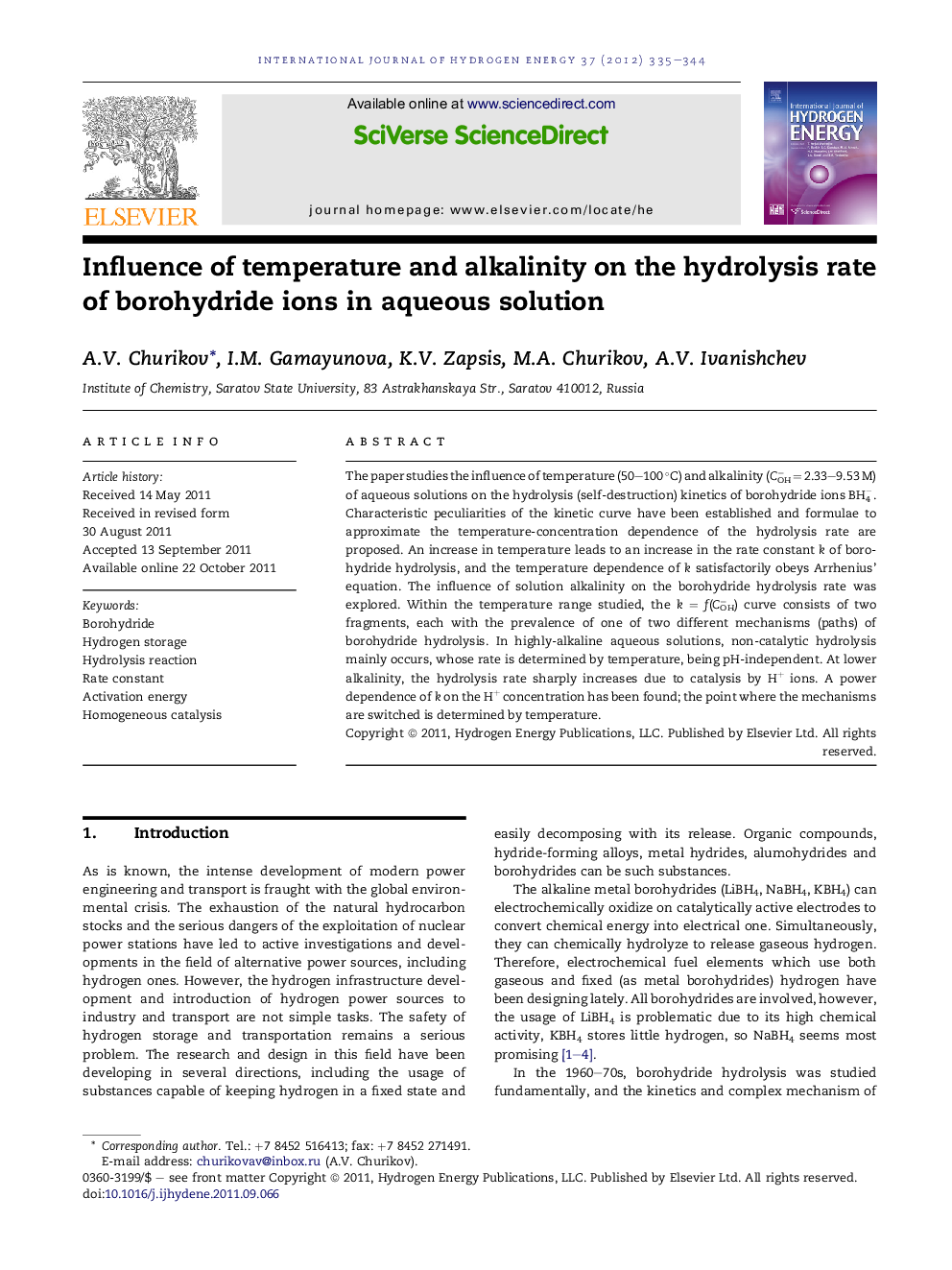| Article ID | Journal | Published Year | Pages | File Type |
|---|---|---|---|---|
| 1277149 | International Journal of Hydrogen Energy | 2012 | 10 Pages |
The paper studies the influence of temperature (50–100 °C) and alkalinity (COH− = 2.33–9.53 M) of aqueous solutions on the hydrolysis (self-destruction) kinetics of borohydride ions BH4−. Characteristic peculiarities of the kinetic curve have been established and formulae to approximate the temperature-concentration dependence of the hydrolysis rate are proposed. An increase in temperature leads to an increase in the rate constant k of borohydride hydrolysis, and the temperature dependence of k satisfactorily obeys Arrhenius’ equation. The influence of solution alkalinity on the borohydride hydrolysis rate was explored. Within the temperature range studied, the k = f(COH−) curve consists of two fragments, each with the prevalence of one of two different mechanisms (paths) of borohydride hydrolysis. In highly-alkaline aqueous solutions, non-catalytic hydrolysis mainly occurs, whose rate is determined by temperature, being pH-independent. At lower alkalinity, the hydrolysis rate sharply increases due to catalysis by H+ ions. A power dependence of k on the H+ concentration has been found; the point where the mechanisms are switched is determined by temperature.
► Characteristic peculiarities of the BH4− decomposition kinetics in strongly alkaline aqueous solutions have been established. ► First order of the BH4− hydrolysis with deviations at the final stage has been established. ► At a high alkalinity, non-catalytic hydrolysis mainly occurs, whose rate is determined by temperature (pH-independent). ► When alkalinity is reduced, the BH4− hydrolysis rate sharply increases due to catalysis by H+ ions. ► Equations to approximate the temperature-concentration dependences and to predict the BH4– hydrolysis rate are offered.
